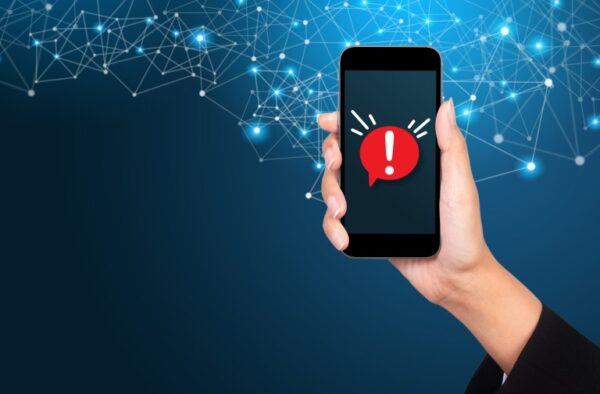
Scam Alert: us9514901185421 – Protecting Yourself from Online Scams
Scam Alert : us9514901185421 , us9514 , 9011 , 85421 , Scam Alert, tracking number us9514901185421 , tracking number
US9514901185421 : scams have become an unfortunate reality. As technology advances, so do the methods employed by scammers to deceive unsuspecting individuals. One such scam that has gained notoriety is the mysterious “us9514901185421.we will delve into the details of this scam, how it works, and most importantly, how to protect yourself from falling victim to it.
Read more : https://myfeednews.com/us6896901185421/
Understanding us9514901185421
First and foremost, let’s address the enigmatic “us9514901185421.” This alphanumeric code may seem innocuous at first glance, but it serves as a warning sign of a potential scam. Scammers often use these codes in various online schemes to confuse and mislead their targets.
How the Scam Works
The us9514901185421 scam primarily operates through email, text messages, or social media. Victims typically receive a message claiming that they have won a substantial amount of money or a valuable prize. The message includes the us9514901185421 code as a reference, making it appear legitimate.
To claim their supposed prize, victims are asked to provide personal information, such as their full name, address, phone number, and even financial details. In some cases, the scammers may request an upfront payment for processing fees or taxes, further trapping their victims in the scam.
Red Flags to Watch For
Recognizing the signs of the us9514901185421 scam is essential in protecting yourself from falling victim. Here are some red flags to be aware of:
- Unsolicited Messages: Be cautious of unsolicited messages, especially if they claim you’ve won something without any prior participation in a contest or lottery.
- Too Good to Be True: If an offer seems too good to be true, it probably is. Scammers often dangle attractive prizes to lure victims.
- Urgent Requests for Personal Information: Legitimate organizations don’t typically request sensitive information via email or text messages. Be wary of any request for personal or financial details.
- Upfront Payments: Never send money upfront to claim a prize or reward. This is a common tactic used by scammers to steal your money.
- Poor Grammar and Spelling: Many scams originate from non-native English speakers, leading to poorly written messages riddled with grammar and spelling errors.
Protecting Yourself from Scams
Now that you know how the us9514901185421 scam operates and its red flags, let’s discuss how you can protect yourself:
- Stay Informed: Educate yourself and stay updated on the latest scams and phishing tactics. Knowledge is your best defense.
- Verify Contacts: If you receive a suspicious message, verify the sender’s identity through official channels. Contact the organization directly using contact information from their official website.
- Use Strong Passwords: Maintain strong, unique passwords for online accounts, and consider using a password manager to keep track of them.
- Enable Two-Factor Authentication (2FA): Whenever possible, enable 2FA for your online accounts. This adds an extra layer of security.
- Trust Your Instincts: If something feels off or too good to be true, trust your instincts and proceed with caution.
- Report Scams: If you encounter a scam, report it to the relevant authorities, such as the Federal Trade Commission (FTC) in the United States.
conclusion,
The us9514901185421 scam is just one of many online scams that prey on unsuspecting individuals. By staying informed, being vigilant, and following best practices for online security, you can protect yourself from falling victim to these schemes. Remember, it’s always better to be cautious and verify before you trust any unsolicited messages or offers, especially those involving mysterious codes like us9514901185421.
FAQ
-
What should I do if I receive a suspicious email or message with a reference number like “us9514901185421”?
- Answer: Be cautious when dealing with such messages. Do not click on any links or download any attachments. Instead, verify the sender’s identity and contact the organization directly using official contact information to confirm the authenticity of the message.
-
How can I spot a phishing email or message?
- Answer: Look for signs of phishing, such as misspelled words, generic greetings, urgent requests for personal information or money, and suspicious email addresses or domains. Legitimate organizations usually address you by name and provide contact details.
-
What if I’ve already clicked on a suspicious link or provided personal information to a potential scammer?
- Answer: If you’ve fallen victim to a scam, take immediate action. Change your passwords, enable two-factor authentication on your accounts, and monitor your financial statements for any unauthorized transactions. Report the incident to your bank, the platform where the scam occurred, and local law enforcement.
-
How can I protect my personal and financial information online?
- Answer: Protect your information by using strong, unique passwords for each online account, regularly updating your software and security apps, and avoiding sharing sensitive information via email or on unsecured websites. Be cautious when sharing personal information and consider using a virtual private network (VPN) for added security.
-
What resources are available to report and prevent online scams?
- Answer: You can report scams to the following organizations:
- Federal Trade Commission (FTC): In the United States, report scams at ftc.gov/complaint.
- Internet Crime Complaint Center (IC3): Report cybercrimes at ic3.gov.
- Your local law enforcement agency: If you believe you’ve been a victim of a serious crime, contact your local authorities.
- Answer: You can report scams to the following organizations:

